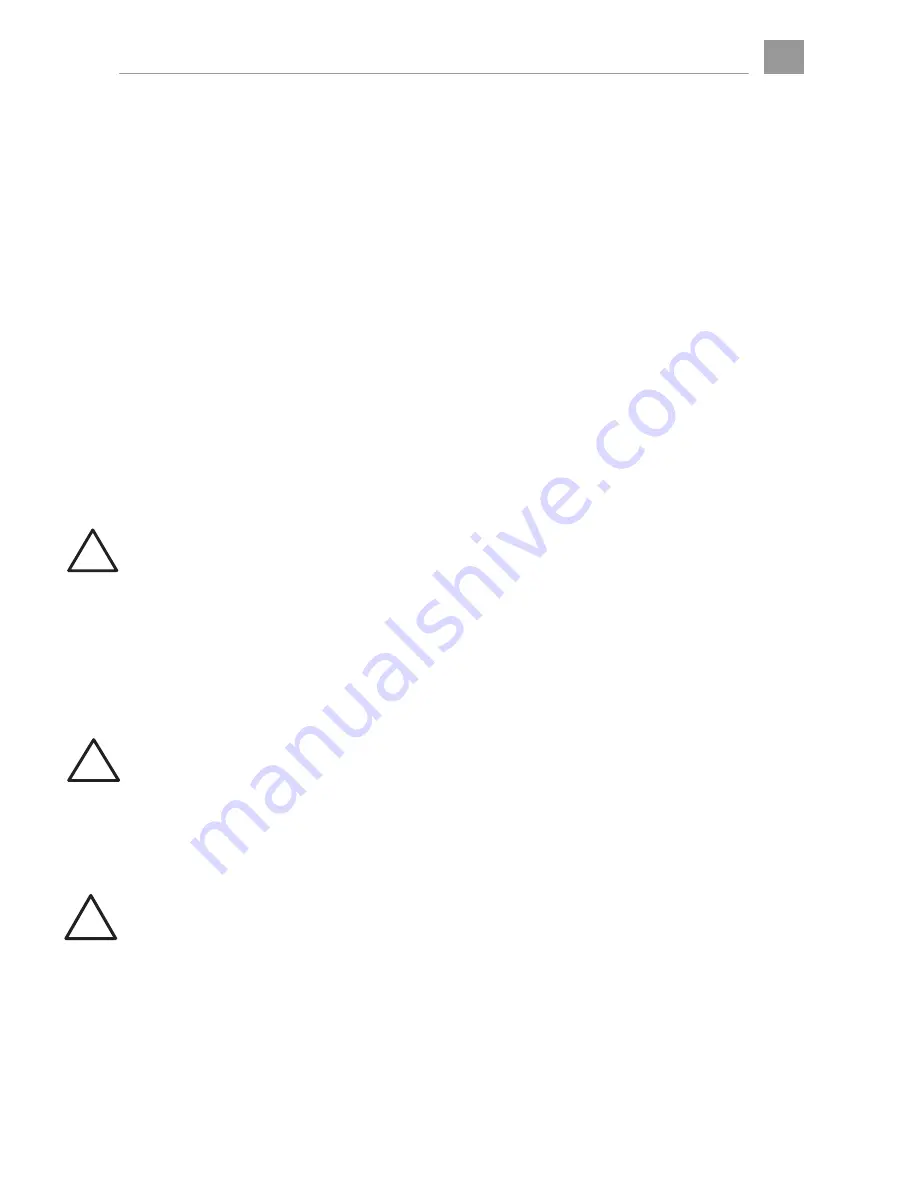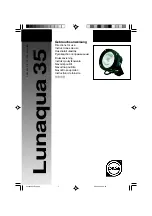
©Hartenberger Unterwassertechnische Geräte GmbH Rights reserved for technical changes. Issue 01.2011
17
Instructions for use Hartenberger High-Tech-UW-Lamp nano compact
features of individual cells within the cell pack, thus causing an unbalance
within the cell pack that in turn may cause the weakest (and therefore the
most susceptible) cell to fail prematurely. The more often the cell pack is
discharged to the pint where the discharge protection cuts in, the greater
the chance that an individual cell will fail within the cell pack.
PREPARATION FOR CHARGING
There are two methods for charging the lamp.
I. INTERNAL CHARGING CONNECTION
The charging connection is located on the cell pack, the cell pack must be
removed for charging.
This is the preferred method of charging as the cell pack can be seen and
monitored during the charging process.
Open the rear cover on the lamp housing and remove the power pack (see
page 10).
The charging connections are marked with + (red/right contact) and – (blue/left
contact).
Charge the cell pack in a cool dry environment (ideally 10-20°C / 50 – 68°F). The
ambient temperature should never exceed 40°C (104°F ). If the cell pack is warm
to touch (above 40°C / 104°F) then allow the cell p ack to cool down before
charging.
Warning !
The charging process requires a mains power supply socket close to the
cell pack and the cell pack should be placed on a dry surface that is not
sensitive. (Even gas tight lithium manganese cells may leak under certain
conditions, this leakage may cause damage to the surface the cell pack is
placed on).
Note that a defective electronic module may cause the lamp to turn on
during charging. Damage to adjacent material caused by the resulting heat
generated by the halogen bulb must be avoided. For this reason we
recommend that the halogen bulb is removed during charging.
Warning !
Check the condition of the charging sockets and cell pack regularly and
examine for signs of corrosion, oxidation of leakage. Examine the sleeves
surrounding the cells for signs of bubbling or traces of a white, floury
residue between the cells in the cell pack. In any of the above conditions
are found, do not charge the cell pack ! Return the lamp to the manufacturer
for evaluation, pack the cell pack and the housing separately.
Warning !
The temperature of the individual cells should also be checked regularly by
feeling the temperature during charging. If one or more cells is hot to touch
then this may indicate a defective cell or cell pack. Do not use this cell
pack, return it to the manufacturer for evaluation or replace the cell pack
with a new one.
II. EXTERNAL CHARGING CONNECTION
The charging connection is on the outside of the housing, the cell pack remains in
the lamp housing during charging.
This method of charging is advantageous when the ambient conditions are
unsuitable for opening the housing, the cell pack is charged via the external
connections located on the rear of the housing.
!
!
!








































